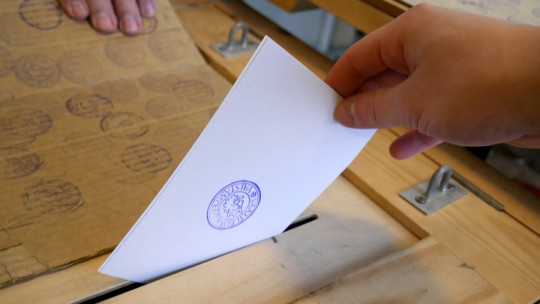Many times, for fear that our opinion will not be well received, we do things we do not want or tolerate certain behaviors that harm or hurt us. On the contrary, it may also be that we say things with very little tact, without taking the other person into account.
We do not have to accept behaviors that harm us, nor can we always have the same opinion as others. It is okay to have disagreements and express them, however, sometimes it is not just about “what” you say, but “how” you say it. This nuance is important because it can make it come across differently to the other person. In this PsychologyFor article we will talk about What is the sandwich technique, what is it for and how to apply it Step by Step.
The Sandwich Technique is a popular method used in psychology, communication, and management to deliver constructive feedback effectively. This approach involves “sandwiching” the critical feedback between two positive statements, making it easier for the recipient to accept and act upon the feedback. This article explores the origins, applications, and benefits of the Sandwich Technique, providing a comprehensive understanding of its role in promoting effective communication and personal growth.
What is the Sandwich Technique?
The Sandwich Technique, also known as the Feedback Sandwich, is a strategy for delivering feedback in a way that minimizes defensiveness and promotes receptivity. It involves presenting positive feedback, followed by the critical or constructive feedback, and concluding with another positive statement.
- Positive Statement: Begin with a positive remark to set a constructive tone.
- Constructive Feedback: Deliver the critical feedback in a clear and specific manner.
- Positive Closure: End with a positive comment to reinforce encouragement and support.
The sandwich technique consists of using sincere praise, or the expression of positive feelings, before and after expressing something that may upset the interlocutor. According to psychologist Elia Roca(1) it is about offering an opinion in a positive and, above all, more decisive way.
This technique allows you to mediate with the other person in a friendly and being able to say what makes you uncomfortable, or their behavior makes you uncomfortable without being aggressive, which allows for an assertive communication style. Specifically, the sandwich technique consists of three steps:
- Formulating a sincere praise: Genuine and true praise is expressed about the other person in a clear and concise manner. You define the situation or comment on something positive about the other person.
- Request for change of behavior: the criticism or request towards the other person is developed and explained.
- Expression of positive sentiment and proposal of alternatives: It ends by explaining a positive proposal, with words of encouragement and confidence.
In this way, something positive is said at the beginning and at the end of the interaction, and in between the criticism or request is expressed assertively. For this reason, it is called the sandwich technique, since it resembles the layers that make up this food.
Example of the sandwich technique
So that you better understand the steps of the sandwich technique, we will show you a practical example:
- I understand that you had a bad day at university today, I am very sorry that you did not pass the exam.
- But I don’t like the way you talked to me. Please, she talks to me in a more respectful way.
- I know that you will take it into account and try to prevent it from happening again. Talking to each other with respect strengthens our relationship. I trust you.
Origins of the Sandwich Technique
Historical Background
The Sandwich Technique has its roots in management and educational practices where the need to provide constructive criticism without demotivating the individual was recognized.
- Management Training: Initially used in corporate training programs to improve employee performance and morale.
- Educational Settings: Adopted by educators to give feedback to students in a manner that encourages learning and improvement.
Psychological Foundations
The technique is grounded in psychological principles that emphasize the importance of positive reinforcement and the human tendency to respond better to balanced feedback.
- Positive Reinforcement: Highlighting strengths helps reinforce desired behaviors.
- Balanced Feedback: Combining positive and negative feedback reduces resistance and promotes acceptance.
What is the sandwich technique for?
The sandwich technique is a conscious and sensitive communication strategy that all people can use to transform our relationships as a couple, with friends, family and co-workers.
The sandwich technique is a strategy used to modify behavior from positive reinforcement. This resource helps us express negative criticism without it being received badly by the other person. Furthermore, this communication strategy is important because it emphasizes the positive without hiding the negative and allows it to be expressed in an appropriate and healthy way.
Relationships strengthen when you express your needs and thrive when both people feel accepted. In this sense, the feedback of the sandwich takes tact and empathy into account when communicating. We all have problems to solve in relationships no matter how good the partner, friends, family, etc. are. Therefore, we need to have difficult conversations but with tact, empathy and respect.
How to apply the sandwich technique
Below, we give you a series of important tips so that you know how to apply the sandwich technique correctly:
- It is a type of assertive communication where we express our rights, opinions, ideas, needs and feelings consciously, clearly, honestly and sincerely, without hurting or harming others.
- It is not intended to be false or simply to silence others. As we have specified in the first point, one of the bases of the sandwich technique is sincerity and not hiding important information, even if it may offend the interlocutor.
- Requests are usually better received than demands: Generally, people do not like to feel that they are ordered or commanded to do something.
- Try to express how you feel without accusing the other and speaking from the “I”: “I feel” instead of “you make me feel.”
- Focus on a single dilemma: We can have many problems simultaneously that can be overwhelming for ourselves and others. The best way to communicate is to share one problem at a time. Too many change requests at once make them seem impossible to resolve.
- Try to propose alternatives to your criticism: When making a proposal for change or constructive criticism, try to propose alternatives to the person so that the entire weight of improving the relationship does not fall on them, and they see the real possibility of improving the situation.
- Tolerance is essential: Try to act more thoughtfully and less reactive to comments to avoid tension and possible escalation of conflict. In this article you will see how to be more tolerant.
- Try to keep a calm tone of voice and take breaks when you need it. It is normal to be overwhelmed by shouting and loud voices. Plus, it’s unproductive and hurtful. If the conversation gets tense, take a break and resume it when both parties are calmer.
Step-by-Step Guide
Applying the Sandwich Technique involves a structured approach to ensure the feedback is effective and well-received.
Step 1: Positive Opening
Start with genuine praise or positive feedback related to the person’s recent performance or behavior.
- Example: “I really appreciate the effort you put into the project. Your dedication is impressive.”
Step 2: Constructive Feedback
Deliver the critical feedback clearly and objectively, focusing on specific behaviors or outcomes rather than personal attributes.
- Example: “However, I noticed that the report was submitted past the deadline, which affected the overall timeline of the project.”
Step 3: Positive Closure
Conclude with another positive statement that reinforces your support and encouragement for future improvements.
- Example: “I know you have the skills to manage your time effectively, and I’m confident you’ll be able to meet the deadlines going forward.”
Tips for Effective Use
- Be Sincere: Ensure the positive feedback is genuine and not just a superficial compliment.
- Be Specific: Provide clear examples for both positive and constructive feedback.
- Be Constructive: Focus on behavior and outcomes rather than personal criticism.
- Be Supportive: Reinforce your belief in the person’s ability to improve and succeed.
Benefits of the Sandwich Technique
Enhances Receptivity
By starting and ending with positive feedback, the Sandwich Technique makes the recipient more open to receiving and acting on the constructive feedback.
- Reduces Defensiveness: Positive statements create a supportive environment, reducing the likelihood of defensive reactions.
- Promotes Openness: Encourages a more open and constructive dialogue about areas for improvement.
Builds Confidence
The positive feedback elements help build and maintain the recipient’s confidence, even when addressing areas that need improvement.
- Reinforces Strengths: Highlighting strengths helps individuals feel valued and capable.
- Encourages Growth: Positive closure reinforces the potential for growth and improvement.
Improves Relationships
Using the Sandwich Technique can strengthen relationships by demonstrating respect, empathy, and support.
- Shows Respect: Acknowledging positive contributions shows respect for the individual’s efforts.
- Builds Trust: Consistent use of balanced feedback builds trust and rapport.
Criticisms and Limitations
Perceived Insincerity
One of the main criticisms of the Sandwich Technique is that it can sometimes come across as insincere or manipulative if not used appropriately.
- Superficial Praise: If the positive feedback is not genuine, it can undermine the entire message.
- Predictability: Repeated use of the technique in a formulaic way can make the feedback seem predictable and less impactful.
Focus on Weaknesses
Another limitation is that the technique might lead to an overemphasis on weaknesses, potentially overshadowing the positive feedback.
- Balanced Approach: It’s important to ensure that the positive feedback is substantial and meaningful, not just a prelude to criticism.
- Context Matters: The context and individual recipient should be considered to tailor the feedback approach effectively.
The Sandwich Technique is a valuable tool for delivering feedback in a constructive and supportive manner. By balancing positive reinforcement with constructive criticism, it enhances receptivity, builds confidence, and improves relationships. However, it’s important to use the technique sincerely and appropriately to avoid potential pitfalls. When applied effectively, the Sandwich Technique can foster personal and professional growth, making it an essential strategy in communication and management.
FAQs about Sandwich Technique
What is the Sandwich Technique in psychology?
The Sandwich Technique is a feedback strategy that involves giving positive feedback, followed by constructive criticism, and ending with another positive statement to promote receptivity and reduce defensiveness.
How can I ensure the Sandwich Technique is effective?
To ensure effectiveness, be sincere in your praise, specific in your feedback, and supportive in your closing remarks. Avoid superficial compliments and tailor your approach to the individual.
Can the Sandwich Technique be used in all situations?
While it can be useful in many contexts, the Sandwich Technique may not be suitable for every situation. Consider the context and the individual’s needs when deciding on the feedback approach.
What are the main benefits of using the Sandwich Technique?
The main benefits include enhanced receptivity to feedback, improved confidence, and strengthened relationships. It helps create a balanced and supportive environment for personal and professional growth.
Are there any drawbacks to using the Sandwich Technique?
Potential drawbacks include perceived insincerity if not used genuinely and predictability if used too formulaically. It’s important to balance positive and constructive feedback meaningfully and contextually.
This article is merely informative, at PsychologyFor we do not have the power to make a diagnosis or recommend a treatment. We invite you to go to a psychologist to treat your particular case.
If you want to read more articles similar to What is the sandwich technique in psychology and how to apply it we recommend that you enter our Social Psychology category.
References
- Rock, E. (2014). How to improve your social skills. Spain, Valencia: Acde.
- Orloff, J. (2017). The empath’s survival guide: Life strategies for sensitive people. Sounds True.











